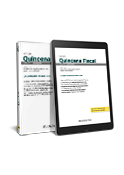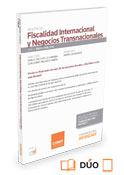
On October 9, 2024, the Internal Revenue Service (“IRS”), released the final regulations under the Internal Revenue Code (“IRC”), section 367(d) on certain repatriations of intangible property (“IP”).
The word “repatriation” is defined as the act or process of returning a person or thing to the country of origin. This definition rang a bell and reminded me of the Parthenon sculptures controversy and the Greek government´s requesting their “repatriation” to Greece. As we all know, the British museum and the UK government rejected this request claiming they were obtained legally. The controversy remains, and the five Caryatids are still awaiting the happy return of their sixth sister.
Just like in this case of the Caryatids, a “repatriation” of assets in taxation, would most likely cause unpleasant outcome, complicated implications, and not-so-happy-ending consequences.
For this reason, section 367(d) was reviewed to avoid similar complications and surprises. It is particularly relevant in situations involving foreign subsidiaries and US companies that transfer intangible assets, such as patents, licenses, inventions, or trademarks. The main purpose is to shift how IP transfers are taxed under said section of the IRC. The changes aim to simplify and reduce excessive US tax obligations for businesses involved in cross-border transactions, particularly those managing global intangible assets.
Last year, on May 3, 2023, the IRS had published regulations (“the proposed regulations”), that would terminate the application of section 367(d), when IP is repatriated back to the US, in some cases, and meeting some specific conditions. These regulations represented a favorable position for taxpayers that have considered repatriating IP.
BACKGROUND
Pursuant to section 367(d), when a US person transfers IP to a transferee foreign corporation (“TFC”), in a tax-free exchange under Sections 351 or 361, the transfer is treated as a deemed sale by the US transferor to the TFC, in exchange for payments that are contingent upon the productivity, use, or disposition of the IP, over its useful life. Previously, section 367(d) did not distinguish between subsequent transfers of IP made to related US or foreign persons, and the inclusion streams continued, resulting in excessive US taxation.
The IRS expressed its concern in the preamble to the proposed regulations “there is a concern that, in certain cases, the section 367(d) regulations can inappropriately require the U.S. transferor to continue recognizing an annual section 367(d) inclusion even if the subsequent transfer is to a related U.S. person that will recognize the income derived from the intangible property”.
Thus, the proposed regulations would terminate the continued application of section 367(d) in certain circumstances.
The final regulations follow proposed regulations published on May 3, 2023, with minimal changes and will apply to subsequent dispositions of IP occurring on or after October 10, 2024.
FRAMEWORK OF THE FINAL REGULATIONS
Termination of inclusions on repatriation- Section 367(2):
Under the final regulations, the inclusions under 367(d) are terminated if the following conditions are met:
- The TFC repatriates the IP to a «qualified domestic person» (“QDP”), and
- The US transferor complies with some necessary reporting requirements.
Who could be qualified as a QDP? It could be the initial US transferor, the successor of the US transferor, or a US person that is either an individual or «qualified corporation”, subject to US federal income tax. This definition does not extend to S corporations nor to partnerships. Such businesses are excluded from this definition and cannot beneficiate from these measures.
In the event, the IP is initially repatriated to a US person who, subsequently, transfers said IP in related transactions, the initial recipient would be considered a QDP, only, if the ultimate recipient qualifies as well.
Adjusted basis and gain recognized by US transferor:
A QDP’s basis in repatriated IP will depend on whether the IP constitutes a “transferred basis property”. Where it is considered as such, the QDP’s basis would be the result of the lesser of the US transferor’s original basis, or the TFC’s adjusted basis immediately before repatriation, plus the greater of any gain recognized by the US transferor or the TFC as a result of the repatriation.
If the IP is not transferred basis property, the QDP’s basis is the IP’s fair market value as of the date of repatriation.
Another detail should be considered, upon an IP repatriation, a US transferor must recognize a section 367(d) inclusion for the portion of the tax year during which the IP was owned by the TFC.
A US transferor may recognize gain in connection with a repatriation. If the IP is transferred basis property, the amount of gain recognized by the US transferor would be equal to the amount recognized by the TFC. If the IP is not transferred basis property, the amount of gain recognized by the US transferor is the difference between the IP’s fair market value as of the date of repatriation and the US transferor’s former basis.
Foreign branches income rules:
The final regulations state that the repatriation of IP does not affect the application of foreign branch income rules provided in Reg. 1.904-4(f)(2)(vi)(D). Each transfer of IP must be considered independently from any other preceding or subsequent transfer of the IP, ensuring that foreign branches continue to recognize the appropriate amount of income attributable to the transferred IP.
Recommendations rejected:
This final paper does not adopt some suggested changes, recommendations and observations presented by commenters, such as, the admissibility of multiple transfers before repatriation, and required adjustment related to the annual inclusion.
Multiple transfers before repatriation: some commenters requested to accommodate repatriation preceded by other significant IP transfers, subject to section 367(d), that could lead to double taxation. The IRS stated that coordinating potential disparities between income recognition under section 367(d) as compared to other generally applicable provisions of the IRC, and potential disparities in tax basis for these purposes as compared to adjusted basis for other purposes, are beyond the scope of this rulemaking.
Required adjustments related to an annual section 367(d) Inclusion: The final regulations did not clarify the adequate treatment of a TFC’s adjusted basis in IP subject to section 367(d), based on examples and comments presented. The IRS mentioned that addressing theses issues implicates broader framework and inconsistent with proposed regulations and section 367(d) itself.
IMPLICATIONS
These regulations enable the subsequent repatriation of previously outbound IP by providing certainty on the termination of the annual inclusion. They represent a welcoming development for US multinationals and subsidiaries. However, some areas remain unclear and double taxation may still exist.
CONCLUSION
I believe that these regulations encourage US multinationals and corporations to repatriate their IP without subjecting themselves to excessive taxation and would allow them to potentially mitigate their audit risks. However, we still face some unanswered observations and recommendations which could lead to confusion. Thus, multinationals must review carefully their own particular facts and details to ensure compliance with reporting requirements for them to benefit from these changes.
Wishing you a “happy repatriation” …
Cheers!
The opinion expressed in this article is exclusively of the author and does not reflect nor can it be related to her professional environment.



